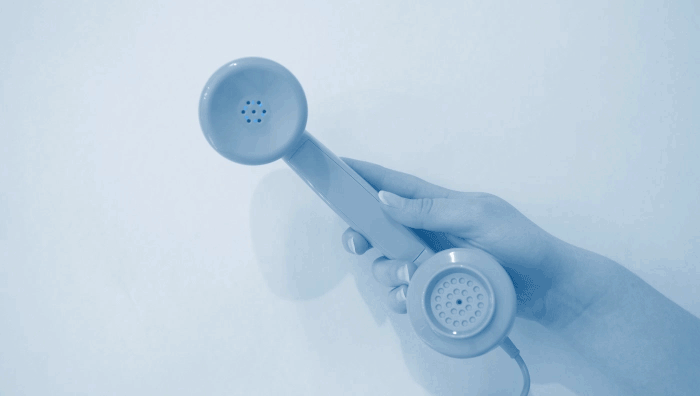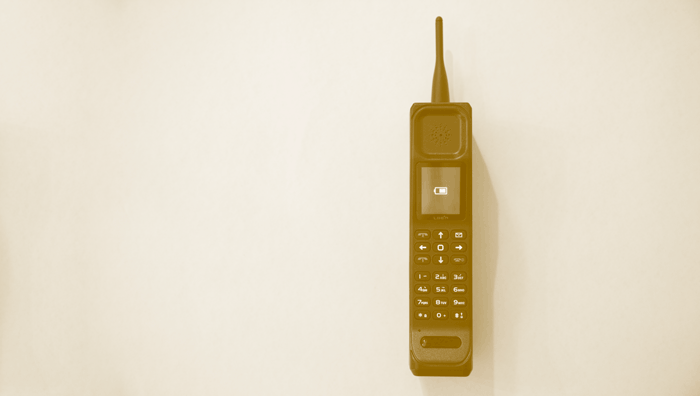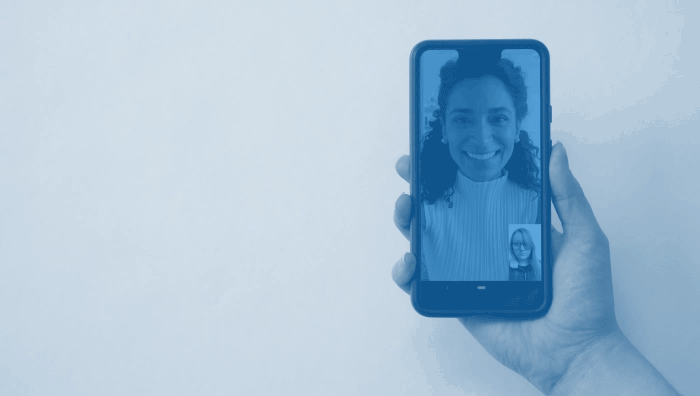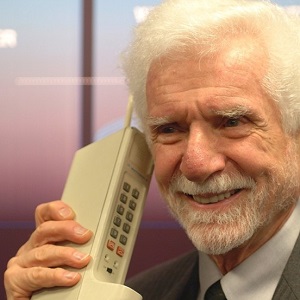Walter Isaacson: It’s June 25, 1876. A sultry summer day in the vast machinery hall of the Philadelphia Centennial Exposition. Pacing the floor is a rather agitated, still unknown, 29-year-old investor by the name of Alexander Graham Bell. By all accounts Bell would rather not be here. He’s rather be attending to his true passion, teaching hearing impaired students including a young Helen Keller at a school he founded in Boston. But his father-in-law and principal investor has insisted. Today the Committee on Electrical Awards will decide which invention to give the coveted gold metal.
Bell has entered his latest gadget which he calls the speaking telegraph. With similar devices from rival investors like Thomas Edison on the horizon, it’s crucial that Bell’s machine make its mark now. Bell watches impatiently as the judges slowly make their way through the displays. And then devastating news. The exhausted committee has decided to call it quits before they even look at his invention.
Enter Dom Pedro, Emperor of Brazil. The flamboyantly-bearded and garrulous monarch has been invited to act as one of the exhibition judges. And just before the committee calls it a day, he notices Bell across the room. He approaches him and asks about his invention. When Don Pedro hears what the speaking telegraph, at this point a simple metal horn attached to a wooden plaque, is capable of he’s thrilled. He insists that it be demonstrated in front of the crowd. When they hear his voice clearly over the wire from the other side of the huge hall, the room is electrified. Alexander Graham Bell takes home the gold metal changing the course of personal communications forever.
I’m Walter Isaacson and you’re listening to Trailblazers, an original podcast from Dell Technologies.
Speaker 1: The telephone brings nearness to any home site.
Speaker 2: One moment please.
Speaker 1: All over town telephones are bringing people together. The dwelling without a phone is cut off from the world.
Speaker 3: Right now you can call anywhere in the world if you want to.
Speaker 1: Hello? Hello? Guess they hung up.
Walter Isaacson: Since Alexander Graham Bell first demonstrated it, the phone has stitched together the world in miraculous ways. More than just revolutionizing the way we communicate, the telephone enabled technological disruption for the next 150 years. The transistor, personal computing and touch screen revolution, they all go back to Bell’s invention. And it started with a zealous young man from across the Atlantic. There’s a popular image of Alexander Graham Bell as a fiery-eyed Victorian gray beard. But he actually made his mark on the world as a relatively young man.
Charlotte Gray: He was this almost cadaverous dark-haired passionate Scotsman who was determined to do good in the world.
Walter Isaacson: Charlotte Gray is the author of Reluctant Genius, the passionate life and inventive mind of Alexander Graham Bell.
Charlotte Gray: Bell came from a family of elocution teachers as they were called then. Now we call them speech therapists. Both his father and his grandfather helped people who had speech problems. He himself became very interested in education for the deaf and a way to help them lip read as it was called then. He was always very committed to education for the deaf and in fact felt very strongly that that perhaps is where he should make his mark in the world. His mother was deaf and in fact his wife, Mabel, was also profoundly deaf.
Walter Isaacson: At the time in the late 19th century, Samuel Morse’s invention of the telegraph was in the process of opening up the world as it allowed near instant communication around the globe. But as miraculous as the invention was, it had limitations. It was slow to operate. Only one message could be sent at a time. And only text not sounds.
Bell became convinced that it was possible to send sound over the wires and he wasn’t the only one. He was competing with heavy hitters not the least of whom was Thomas Edison, the most celebrated brilliant inventor of his era if not of all time.
But Bell had an edge on Edison and the others.
Charlotte Gray: What Alexander Graham Bell had which is rivals didn’t have was a really deep understanding of how the human body both transmits and hears sound. This was because he had worked on visible speech and on teaching the deaf to speak and to understand. So, he put these two elements together, his understanding of electricity and his understanding of how the ear works.
Walter Isaacson: On March 10, 1876 at Bell’s lab in Boston the first phone call took place. It was famously an accident. Bell and his assistant, Thomas Watson, were testing their equipment.
Charlotte Gray: They had Watson in one room down the corridor and Bell set up to speak into the mouthpiece two rooms away and Watson was listening at the reception. They were twanging various tuning forks and that was working fine. Then suddenly Watson heard his boss say, “Mr. Watson, please come here.” Watson was so excited that he rushed down to say I hear you, I hear you to discover that what had happened was that Bell had spilt the acidulated water that was part of the speaking tube all over his trousers and wanted Watson’s help mopping it up. But when he heard what had happened, he completely forgot about the stain on his pants and they did a little war dance of triumph.
Walter Isaacson: Bell’s father-in-law rushed his application to the patent office. Amazingly, it was submitted only two hours before his closest competitor. On July 19, 1877 Bell and his father-in-law founded the Bell Telephone Company. It would eventually become the largest corporation in the world. We know it today by the name it adopted in 1899. American Telephone & Telegraph or AT&T. 150 years on, it’s still a telecommunication giant.
But the business side never appealed to the inventor. In fact after he was done inventing it, Bell didn’t seem that interested in the telephone at all. Charlotte Gray.
Charlotte Gray: Actually one of the things I found most amusing about Bell was that in fact he refused to have a telephone in his study. He found it incredibly intrusive. He was a man who liked complete silence when he was working or thinking and was furious if suddenly the telephone rang.
Walter Isaacson: Despite his ambivalence, the telephone continued to take over the world connecting millions of people in the decades following his invention. And the company he founded would go on to shape the world in unimaginable ways throughout the 20th century in no small part due to an extraordinary organization that bore his name, Bell Labs.
40 years later on January 25, 1915 in an office in New York Alexander Graham Bell once again said his now famous line, “Mr. Watson, please come here.” This time Watson wasn’t just down the hall. He was across the country 2500 miles away in San Francisco. Long distance phone service was officially a reality.
In the early 20th century, AT&T controlled so much of the communication’s infrastructure that it was fair to call it a monopoly. It was the largest company in the world and you didn’t want to mess around with them.
Jon Gertner: They were aggressive. They were paranoid.
Walter Isaacson: Jon Gertner is the author of the Idea Factory. Bell Labs in the great age of American innovation.
Jon Gertner: They were also, by way of I think some contradiction, incredibly innovative and in the mid 1920s they decided that they were going to consolidate all their engineers and scientists into a stand-alone laboratory which they called Bell Telephone Laboratories, or Bell Labs, which was sometimes called the crown jewel where the future of telecommunications was gonna be created or invented.
Walter Isaacson: There were huge technological problems to solve. For one, the challenge of making long distance calls. The first practical solution was to use a technology that had been around for decades, the vacuum tube. Scientists at Bell Labs realized that these delicate glass devices held tremendous potential.
Jon Gertner: The vacuum tube could function as a very good amplifier under the right circumstances. They would run a phone call through these repeater tubes which were in these repeater stations every 100 or 150 miles, so if you were calling from New York to San Francisco, your phone call would almost instantaneously pass through 10 or 12 or 15 repeater stations spaced along the country, spaced along these phone lines that ran from coast to coast and could be carried with fidelity and with proper kind of content and volume from coast to coast.
Walter Isaacson: But vacuum tubes had a down side.
Jon Gertner: They’re really hard to make and they broke all the time.
Walter Isaacson: Enter Mervin Kelly. A one time middle manager in charge of the vacuum shop at Bell Labs, he became president of the organization and led it through some of its most significant technological breakthroughs. From the time he worked on the shop floor in the 1920s, Kelly knew there had to be something that could replace the fragile devices that consumed great quantities of power. He also saw that the expensive, breakable, mechanical switches also needed a better solution. Jon Gertner.
Jon Gertner: So we have these two flawed technologies, switches and tubes, that are essential for the functioning of the phone system, but which don’t really have any kind of replacement in the pipeline.
Walter Isaacson: Shortly after the second World War, Kelly developed the solid-state group at Bell Labs to look into the potential of a relatively new technology, the semiconductor. They focused on a material called germanium. It was a painstaking process.
Jon Gertner: One of the physicists working there would say it just felt like we were groping in the dark, but in 1947 two of the physicists working on the solid-state team, Walter Brattain and John Bardeen took this tiny piece of germanium that had a very slight impurity in it and they found that if they put two points into that slab of germanium, they could put a phone signal through that slight impurity, that small piece of germanium, and they could amplify that phone signal significant, something like 16 to 18 times. They also found that they could switch it on and off instantaneously.
Walter Isaacson: The device used a tiny amount of energy compared to vacuum tubes and unlike the clunky switches then in use by the phone company, these didn’t have any breakable parts and they were incredibly small. The invention for which the scientist would eventually share the Nobel Prize would be called the transistor. The transistor changed the way electronics were manufactured allowing for smaller, less expensive, and more powerful devices. The computer as we know it would have been unthinkable if we were still relying on mechanical switches and vacuum tubes.
Jon Gertner: The transistor is probably the greatest invention of the 20th century, and I think the only thing we might compare it to in terms of impact is the atomic bomb. It changed everything I think about electronics and modern life and it created entirely new industries for everything from telecommunications to computing and we’ve all used billions of transistors by the time we get to work, whether it’s in our coffee maker, in our automobiles, on our subway trains, on our telephones. It’s the essential and fundamental element of the electronic age.
Walter Isaacson: Without the pioneering works of AT&T and the scientists at Bell Labs, the world of global communications as we know it would never have come to be. Ironically, that very same company nearly killed the mobile phone.
On a sunny day in early 1973, Martin Cooper, the Motorola engineer, is standing on a corner near Central Park while hordes of New Yorkers stare at him with curiosity. They are focused on a strange looking object in his hand about the size and weight of a brick. Is that a telephone? Here’s Martin.
Martin Cooper: Well we first of all believed that people are fundamentally mobile. You just think about it, you go to the airport, look at the freeway. It seems like everybody is not where they want to be. Everybody’s going somewhere else. So the idea of having a telephone tied to the wall didn’t make a great deal of sense to us.
Walter Isaacson: There were some mobile phones at the time but they were big, wildly expensive, and worst of all, totally unreliable. AT&T had a solution and it happened to be one that fit very well with their own interests.
Martin Cooper: At that time, in the 1969, AT&T approached the Federal Communications Commission and told them that they had a new wonderful system they called cellular and that was gonna solve this problem. All the FCC had to do was to give them a bandwidth of 75 megahertz of spectrum that they would use exclusively to provide the service to the United States.
Walter Isaacson: In other words, they were promising to build out the mobile infrastructure in exchange for a very convenient monopoly, just like they did some six decades earlier.
Understandably, Cooper did not like this plan. Neither did he like AT&T’s vision for the mobile future which involved a small number of very expensive phones, and ones that were not made to fit in your hand but rather in the trunk of a car. So Cooper and his Motorola colleagues took on the task of creating a truly handheld mobile telephone. It involved a bevy of challenges, from communicating on a frequency band never used before to cramming hundreds of radio channels into a single handset.
Martin Cooper: The DynaTAC portable handset, it was about 10 inches tall, about an inch and a half wide, about four inches deep and if that sounds huge to you by our modern stands, it really was huge. But the worst part is is that it weighed about a kilo. It weighed over two pounds. The battery life was 20 minutes. You’d talk for 20 minutes, the battery would run down and that was not a problem, because you couldn’t hold that two pound radio up for 20 minutes. Your arm would fail before that happened.
Walter Isaacson: It didn’t really matter that the DynaTAC was impossibly heavy because it wasn’t made for mass consumption. It was meant to persuade the FCC that Motorola’s idea of a mobile phone was just as viable as AT&T’s, so with their brick like prototype, they headed to New York. Counting on coverage in New York papers, they set up an ad hoc cellular network near Central Park.
Martin Cooper: People were amazed. Think about it. This is 1973, there were no cordless phones even. Here I am standing on the street or it’s actually on 6th Avenue in New York talking on a handheld phone and you probably know about New Yorkers, they’re very blasé and not easily affected, they look through people rather than at them, and there were people standing around amazed that we were standing there talking on a telephone out in the street.
Walter Isaacson: Motorola’s gamble paid off and the airways stayed open for competition. But it was another 10 years before cell service came to America in earnest, and remember those status symbol car phones? Even they stuck around until the 1990s. But the company that eventually brought mobile handsets to the world on a major scale was far from the American labs where the telephone network was first dreamed up.
The company that would bring mobile handsets to the masses was founded a decade before Alexander Graham Bell’s first phone call.
Nokia began as a pulp mill in the town of Tampere, Finland. It produced rubber galoshes, bicycle tires and gas masks. It made telegraph cables, personal computers and eventually mobile phones. By the early 1990S, Nokia saw that cell phones had the potential not just to reach a few wealthy customers, but could truly be for the masses.
Risto S.: The big thing that separated Nokia from the rest of the companies in the business was that, a little bit similar to Microsoft, which had the dream of putting a PC on every desktop. Nokia believed that everybody would be able to use a mobile handset.
Walter Isaacson: Risto Siilasmaa has been the chairman of Nokia since 2012.
Risto S.: And many of the other companies felt that, there will be at most 10000 mobile phones in the world because they are so big and so expensive and not actually needed for the rest of the population. Nokia believed that every single person would be able to use a mobile phone.
Walter Isaacson: With an emphasis on affordable fashionable phones, Nokia cornered the market by the late 1990s. It rang up billions in revenue every year and the company was at the forefront of the mobile technology we take for granted today. They later introduced games and cameras into the market and with the drivers behind the development of network technologies like GSM and 3G, Nokia’s market share kept growing. By 2006, they owned 36% of the world’s mobile device market. It seemed like nothing could dethrone this communications titan until the next big thing burst on the market.
Ken Kocienda: When I was introduced in the project, I actually signed a super secret special non-disclosure agreement without even knowing what I was committing to.
Walter Isaacson: [Ken Coshanda] is a former Apple engineer and the author of creative selection inside Apple’s design process during the golden age of Steve Jobs.
Ken Kocienda: I mean, it’s almost like this trait, sort of cliched silicon valley legend that you’re invited into a project without knowing what it was. But yes, that’s what it was like for me. I was asked to sign this paper and it was only after I fixed my signature that I was told yes, we’re making a cell phone.
Walter Isaacson: By the mid to 2000s Apple had a hit product on their hands, the pocket size iPod music player, selling in the millions, it had revived the flagging brand which had slumped in the 1990s. Rumors had surfaced that Apple was planning to introduce a mobile phone based somehow on the iPod, but until the very day it was announced, almost no one knew anything about it. Even within the company, the project was hush hush. Kocienda was to design one of the iPhone’s most important assets, the keyboard, and while the team didn’t immediately know what that keyboard would look like, they knew one thing. Every interaction would take place on a flat glass screen. There’d be no hardware keyboard like the popular Blackberry phones that dominated sales. Instead, in total secrecy, the company had to develop an entirely new interface.
Ken Kocienda: When we were designing the software, we wanted the experience to be comfortable and so we built in these little affordances and sharistics into the software to help you to figure out what it was that you probably wanted when you touch the screen and then give you that so that the experience of using the iPhone felt like the device was on your side, that it was with you, that it was going to help you rather than hinder you in every step of the way.
Walter Isaacson: Then after years of laboring in total secrecy, the team watched as Steve Jobs introduced the iPhone at the Macworld Expo on January-9-2007. Ken Kocienda.
Ken Kocienda: On the day of the announcement of the iPhone, we were all worried that people were going to like what we did. We didn’t really know the project was such a secret and so few people had actually tried out what we had made that we weren’t sure that the world as a whole would like what we did. The secrecy on the project was so tight that I didn’t even know that it was going to be called the iPhone until Steve said it on stage. I just simply didn’t need to know, so I wasn’t told. I mean it gives you a sense of how much secrecy was all wrapped up in what we were doing and what the project culture was like.
Walter Isaacson: But he needed not have worried, in its first decade Apple sold an astounding 1.2 billion iPhones and the ripple effect was far reaching, computers were no longer confined to our desks or even trotted around in back packs. They weren’t chained to cables or wifi networks. Having an iPhone meant that anyone could have access to internet connected computing power. Entire industries from photography to navigation to personal communication, were disrupted. This was great news for Apple, but devastating for Nokia, which saw their market share plummet as they struggled to keep up. The company’s very survival was in question, but as it did many times over 150 years, Nokia found a way to reshape itself. Jettisoning its old business model and embracing the connected future. Nokia chairman, Risto Siilasmaa.
Risto S.: Well today, Nokia is a digital infrastructure company. We can deliver the world’s most complicated or demanding end to end networks, meaning that we manufacture all the components, both the hardware and software components for fixed line networks, be they copper coaxial cable, optical wireless networks from 2G to 5G and we are the only network infrastructure player in the world that delivers these networks on a global scale. Anybody who sends a bit to the Internet, an email or we’ll choose a video, will be using Nokia software or Nokia equipment for that bit to travel where it needs to go anywhere in the world.
Walter Isaacson: And in a delightful bit of historical irony. When Nokia acquired the telecommunications’ company, Alcatel-Lucent in 2016, it came with the venerable still kicking Bell Labs still going at it a hundred years after it was founded, still winning Nobel prizes.
The telephone has come a long way in the century that took us from the vacuum tube, to the touch screen. But underlying it all is our desire to reach out and connect with each other with the help of high speed, high capacity network technologies such as LTE and the upcoming 5G we’re no longer restricted to just sending our voices around the world. Video calling has gone from science fiction to being faces common-place as voice was a few short decades ago. Our hunger for communication drives the innovation that shape us as a society and whatever comes next after voice, text and video will certainly bring us even closer together. I’m Walter Isaacson and you’ve been listening to Trailblazers, an original podcast from Dell technologies.
Speaker 5: Yes, thank you. Goodbye. Goodbye.
 The Bell we can’t un-ring.
The Bell we can’t un-ring. AT&T and another “T”: The transistor.
AT&T and another “T”: The transistor. The wireless world.
The wireless world. Ken Kocienda
helped create the iPhone while he was a software developer at Apple. He’s also the author of Creative Selection: Inside Apple’s Design Process During the Golden Age of Steve Jobs.
Ken Kocienda
helped create the iPhone while he was a software developer at Apple. He’s also the author of Creative Selection: Inside Apple’s Design Process During the Golden Age of Steve Jobs.
 Charlotte Gray
is the author of Reluctant Genius, Alexander Graham Bell and the Passion for Invention. She’s also an adjunct professor at Carleton University and author of ten non-fiction bestsellers.
Charlotte Gray
is the author of Reluctant Genius, Alexander Graham Bell and the Passion for Invention. She’s also an adjunct professor at Carleton University and author of ten non-fiction bestsellers.
 Jon Gertner
is the author of The Idea Factory: Bell Labs and the Great Age of American Innovation and frequent contributor to The New York Times Magazine.
Jon Gertner
is the author of The Idea Factory: Bell Labs and the Great Age of American Innovation and frequent contributor to The New York Times Magazine.
 Martin Cooper
invented the first handheld portable cell phone and demonstrated it in 1973. He is a member of the National Academy of Engineers, and serves on government advisory councils.
Martin Cooper
invented the first handheld portable cell phone and demonstrated it in 1973. He is a member of the National Academy of Engineers, and serves on government advisory councils.
 Risto Siilasmaa
is the former chairman of Nokia and author of, Transforming Nokia: The Power of Paranoid Optimism to Lead Through Colossal Change.
Risto Siilasmaa
is the former chairman of Nokia and author of, Transforming Nokia: The Power of Paranoid Optimism to Lead Through Colossal Change.